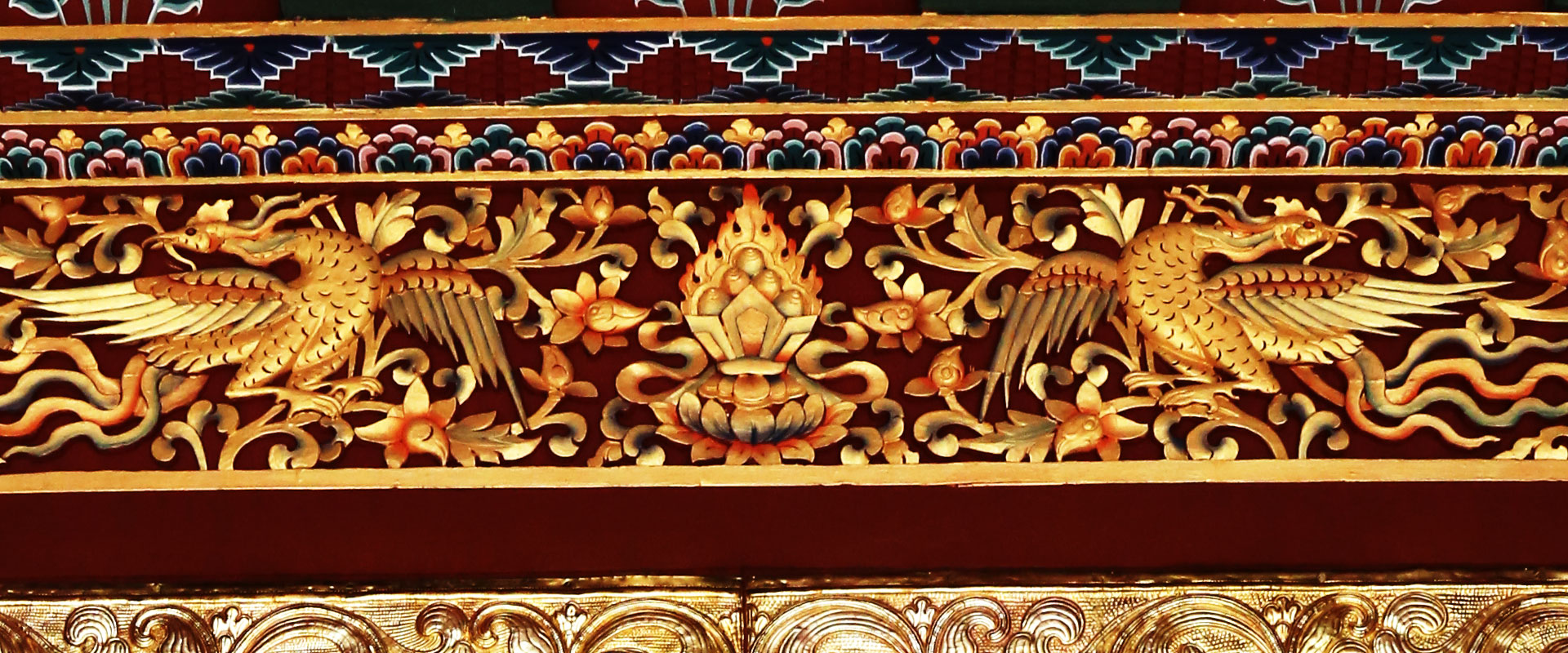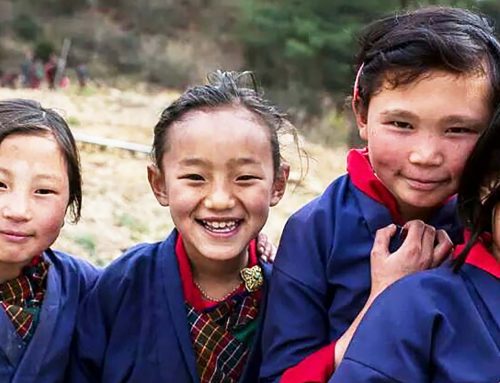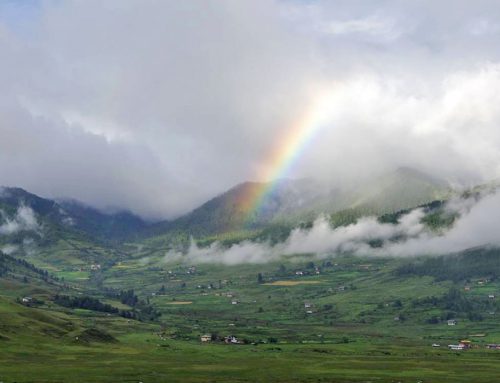The arts and crafts of Bhutan that represents the exclusive “spirit and identity of the Himalayan kingdom” is defined as the art of Zorig Chosum, which means the “thirteen arts and crafts of Bhutan”; the thirteen crafts are carpentry, painting, paper making, blacksmithery, weaving, sculpting and many other crafts. The Institute of Zorig Chosum in Thimphu is the premier institution of traditional arts and crafts set up by the Government of Bhutan with the sole objective of preserving the rich culture and tradition of Bhutan and training students in all traditional art forms.
Articles for everyday use are still fashioned today as they were centuries ago. Traditional artisanship is handed down from generation to generation. Bhutan’s artisans are skilled workers in metals, wood and slate carving, and clay sculpture. Artifacts made of wood include bowls and dishes, some lined with silver. Elegant yet strong woven bamboo baskets, mats, hats, and quivers find both functional and decorative usage. Handmade paper is prepared from tree bark by a process passed down the ages.
Each region has its specialties: raw silk comes from Eastern Bhutan, brocade from Lhuentse, woolen goods from Bumthang, and bamboo wares from Kheng, woodwork from Tashiyangtse, gold and silver work from Thimphu, and yak-hair products from the north or the Black Mountains.
Architecture:
Bhutanese Architecture consists of Dzongs and traditional houses. Dzongs in Bhutan built as fortresses have served as religious and administrative centers since the 17th century. As recently as 1988, by the royal decree, all buildings must be constructed with multi-colored wood frontages, small arched windows and sloping roofs. The other architectures and a unique arts in Bhutan are the Lhakhangs (Bhutanese temples), Chortens, koma (Bhutanese broach), crafts and paintings among others.










